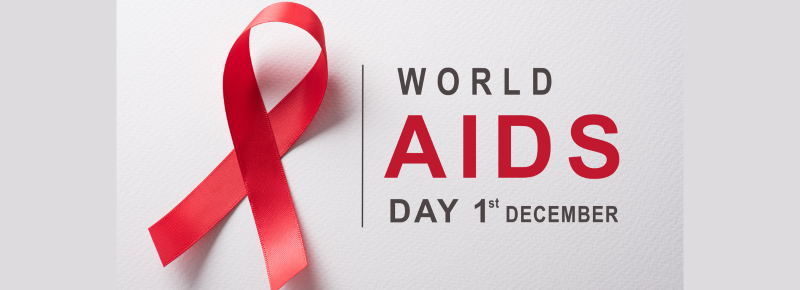Latest
World AIDS Day: Debunking 4 myths about the disease
Author
Author
- admin / 2 years

- 0
- 3 min read

Author
Research consistently indicates that individuals, irrespective of their age, gender, sexual orientation, or socio-economic status, can be susceptible to the virus.
World AIDS Day, designated on 1st December, is a global movement to unite people in the fight against the public health issue. As per latest data provided by the Joint United Nations Programme on HIV/AIDS, approximately 39 million people globally were living with HIV in 2022.
The human immunodeficiency virus (HIV) is an infection that targets the immune system of the body. Acquired immunodeficiency syndrome (AIDS) represents the most advanced stage of this disease. HIV/AIDS has been a global health concern for decades, impacting millions of lives and communities worldwide. Unfortunately, along with the virus itself, a myriad of myths and misconceptions have surfaced, contributing to the stigma surrounding the disease.
Let’s debunk four common myths to help raise awareness about the disease:
Myth 1: HIV/AIDS is a death sentence.
Fact: Due to recent advancements in HIV treatments, being diagnosed with this infection is far from being considered a death sentence. Although current antiretroviral therapy (ART) does not eliminate the HIV infection, it hinders the virus’s replication in the body and facilitates the strengthening of the immune system, enhancing its ability to combat other infections.
Myth 2: HIV only infects a certain group of people.
Fact: A common misconception about HIV/AIDS is that it affects specific demographics. However, research consistently indicates that individuals, irrespective of age, gender, sexual orientation, or socio-economic status, can be susceptible to the virus. While it is true that the infection is more prevalent among men who have sex with male partners, HIV diagnoses have also been attributed to heterosexual contact.
Myth 3: HIV/AIDS can be transmitted through casual contact.
Fact: HIV is not transmitted through casual contact like hugging, shaking hands, or sharing utensils. The virus is primarily spread through unprotected sexual intercourse, sharing of contaminated needles, and from an infected mother to her child during childbirth or breastfeeding. HIV cannot be transmitted through saliva, making it impossible to contract the virus through activities such as kissing. Also, individuals living with HIV who maintain an undetectable viral load through treatment will not transmit the virus to their sexual partners.
Additionally, blood stored for transfusion purposes is free from HIV, ensuring its safety for recipients. The transmission of the virus through organ and tissue donations is also not possible, as these undergo thorough testing. Healthcare professionals conduct rigorous tests on the blood supply to detect and eliminate various blood-related infections, including HIV.
Myth 4: HIV positive women cannot have children.
Fact: The crucial step for a woman living with HIV in preparing for pregnancy is collaborating with the healthcare provider to initiate ART treatment at the earliest opportunity. In cases where the HIV viral load is high, there are measures available for the expectant mother to reduce the risk of transmission. Options include opting for a C-section or choosing bottle feeding with formula after giving birth.
Dispelling myths about HIV/AIDS is essential for promoting accurate information, reducing stigma, and ultimately curbing the spread of the virus. Continued research and education are vital components in the fight against HIV/AIDS, as they empower individuals with the right knowledge to make informed decisions about their health.










